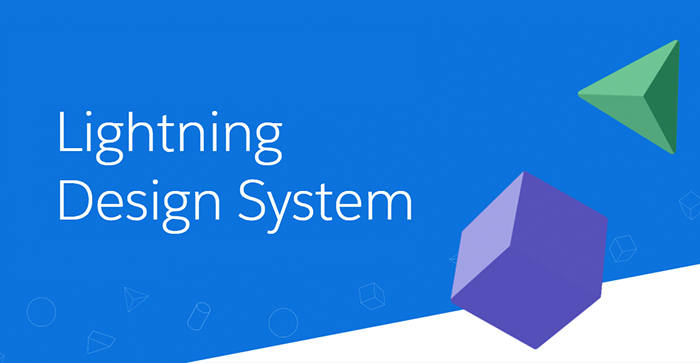
The Salesforce Lightning Design System (SLDS) is an empowering collection of materials, design principles, and tools that equip developers and designers with the ability to produce cutting-edge, intuitive user interfaces for Salesforce applications. There are multiple reasons why SLDS is fantastic for designers.
Developers and designers can more easily create high-quality applications consistent with the look and feel of the Salesforce platform, accessible to everyone, and responsive across various devices thanks to its open-source, responsive, accessible design system and friendly community.
In today’s fast-paced corporate world, companies are always looking for methods to improve user experience and streamline their procedures. The Salesforce Lightning Design System (SLDS) is a shining example of innovation, providing extensive resources and tools for creating cutting-edge, aesthetically pleasing, and user-friendly user interfaces.
To help you become a better designer and Lightning developer, we will guide you through the Salesforce Lightning Design System and its features in this blog. So, let’s embark on this journey together without further ado.
What is the Salesforce Lightning Design System?
Before delving into the reasons to use the Salesforce Lightning Design System, it’s crucial to understand what it entails. Simply put, the Lightning Design System is a framework that allows Salesforce application developers and designers to build fluid, uniform, and responsive user interfaces.
It offers a collection of CSS frameworks, design principles, and best practices to guarantee that all Salesforce platforms and products have a consistent appearance and feel. SLDS is the cornerstone for building visually stunning and highly functional applications within the Salesforce ecosystem.
10 Compelling Reasons to Use the Salesforce Lightning Design System
Now, let’s explore the ten reasons why you should leverage the power of the Salesforce Lightning Design System:
1. Consistent User Experience
One of the primary advantages of adopting the Lightning Design System is the ability to deliver a consistent user experience across all touch points. By adhering to the predefined design patterns and guidelines, developers can ensure that every interaction with the application feels familiar and intuitive to users. Consistency breeds confidence and trust among users, leading to higher engagement and satisfaction levels.
2. Accelerated Development
In today’s competitive landscape, speed is of the essence. The Lightning Design System provides many pre-built components and templates that can significantly accelerate development.
Developers can leverage these reusable elements to quickly assemble interfaces, reducing time-to-market for new features and enhancements. Additionally, the modular nature of SLDS fosters code reusability and maintainability, further expediting the development lifecycle.
3. Responsive Design
The widespread use of mobile devices has made responsive design an essential component of contemporary web development. Because of the Lightning Design System’s intrinsic responsiveness, apps may easily adjust to various screen sizes and form factors. Consumers may take advantage of a consistent and optimized experience without compromising on usability or style, whether using a desktop, tablet, or smartphone.
4. Accessibility Compliance
Inclusivity should be a top priority for any digital product, and the Lightning Design System excels. It adheres to web accessibility standards such as WCAG (Web Content Accessibility Guidelines), ensuring that applications are usable by individuals with disabilities.
From keyboard navigation to screen reader compatibility, SLDS prioritizes
accessibility features, thus catering to a diverse audience and promoting equal access to information and services.
5. Streamlined Collaboration
Effective collaboration between designers and developers is essential for delivering successful digital experiences. The Lightning Design System fosters synergy between these two disciplines by providing a shared language and set of tools.
Designers can create mockups and prototypes using SLDS components, which developers can seamlessly translate into production-ready code. This alignment streamlines the design-to-development workflow, minimizing miscommunication and maximizing efficiency.
6. Scalability and Flexibility
As businesses evolve and grow, their application requirements inevitably change. The Lightning Design System offers unparalleled scalability and flexibility to accommodate evolving needs.
Whether building a simple CRM interface or a complex enterprise application, SLDS provides the building blocks to scale your solution without compromising performance or usability. Moreover, the extensible nature of SLDS allows for customizations and enhancements tailored to your specific business requirements.
7. Brand Consistency
Maintaining brand consistency is paramount for establishing a solid identity and fostering brand loyalty. The Lightning Design System enables organizations to enforce brand guidelines and visual identity across all Salesforce applications.
From color palettes to typography and iconography, SLDS provides customizable branding options that align with your company’s unique aesthetic. Ensuring a cohesive brand experience can reinforce brand recognition and instill confidence in your audience.
8. Seamless Integration
In today’s interconnected ecosystem, seamless integration with third-party systems and services is essential for maximizing productivity and efficiency. The Lightning Design System facilitates integration efforts by providing robust APIs and documentation.
Whether you’re integrating with external databases, APIs, or other Salesforce products, SLDS offers the necessary tools and guidelines to ensure smooth interoperability. This seamless integration empowers organizations to leverage the full potential of their digital ecosystem without encountering compatibility issues.
9. Community-driven Innovation
One of the hallmarks of the Lightning Design System is its vibrant community of developers, designers, and enthusiasts. Salesforce actively encourages collaboration and contributions from the community, fostering a culture of innovation and continuous improvement.
Developers can leverage community-generated resources like open-source components and plugins to enhance their applications and stay abreast of the latest trends and best practices. This collaborative ecosystem fuels creativity and empowers developers to push the boundaries of what’s possible with SLDS.
10. Future-proof Investment
Investing in the Lightning Design System is not just about meeting current needs; it’s about future-proofing your digital strategy. Salesforce is committed to developing and enhancing SLDS, ensuring it remains at the forefront of design and technology trends.
By aligning with Salesforce’s vision and roadmap, organizations can future-proof their applications and stay ahead of the curve. Whether adopting new design paradigms or embracing emerging technologies, SLDS provides a solid foundation for innovation and growth.
The Salesforce Lightning Design System represents a paradigm shift in designing and building applications within the Salesforce ecosystem. From its emphasis on consistency and usability to its support for accessibility and scalability, SLDS embodies modern design and development principles.
By embracing SLDS, organizations can unlock many benefits, including accelerated development, enhanced user experience, and a secure, future-proof investment.
In an era of digital transformation, the Lightning Design System emerges as a beacon of innovation, empowering organizations to create compelling, user-centric experiences that drive success in the digital age.

